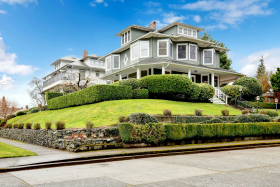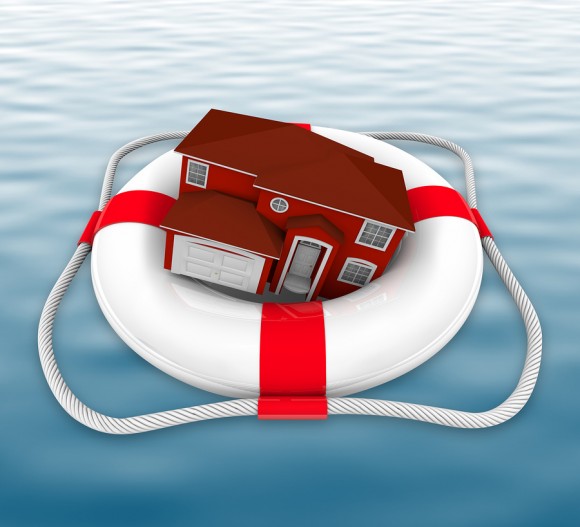As insurance professionals, we’re in the business of anticipating and responding to severe weather. However, heightened activity in recent years points to some startling trends:
• Atlantic named storms in the month of June have nearly doubled since 1995.
• Cal Fire reports 3,719 fires and 63,701 acres burned from Jan. 1 – July 13, 2013, compared to 2,597 fires with 33,412 acres burned for the same time period in 2012.
• The 2011 earthquake in Virginia triggered landslides at distances four times farther — and over an area 20 times larger — than previous research would have indicated.
• More than 20 percent of flood insurance claims come from areas mapped outside high-risk areas.

Unfortunately, those with the most to protect often are not aware of their exposures. Even in the face of an uncontrollable storm or natural disaster, a significant number of claims can be prevented (or their severity lessened) through proactive risk management.
For example, an antique rug was irreparably damaged when wind-driven rain breached a window and created a puddle of water on the floor. Although the puddle was merely a fraction of an inch high, it was enough to destroy a sentimental family heirloom. Had the homeowner known to move valuable items away from windows and doors, the damage could have been avoided entirely.
A more alarming example occurred after Hurricane Katrina: A large estate made it successfully through the storm. Yet when the owner subsequently left the home with candles burning, a multi-million-dollar fire loss ensued.
The Need for a New Perspective
Most personal lines consumers look to price as the driving factor behind their decisions, even as they grow more successful and acquire higher-value homes and possessions.
However, the increased frequency and severity of catastrophic weather events reinforces the importance of considering value in addition to price.
Today’s savvy insurance buyer also should ask, “Do my policies adequately cover my assets?” “If I have a claim, will my service expectations be met, or even exceeded?” “Will my insurance company show me how to mitigate risk?” After all, upfront premium savings can be eroded quickly by uncovered damage or the frustration of timely repairs.
Direct writers are a suitable fit for much of the insurance-buying population, but affluent and high net worth households are better served by independent agents or brokers who can be year-round advisors and connect their clients to tailored coverage and service solutions.
As each household has its own set of exposures and circumstances, choice of carrier becomes critical to finding the right fit.
In addition to pairing personal lines clients with well-rounded coverage, the best agents and brokers become champions of proactive mitigation. By working in collaboration with the select group of companies that devote staff and resources to loss prevention and risk management, they can glean best practices that homeowners can adopt. In many instances, implementing loss-control measures also can lead to premium credits.
Just as an independent agent will uncover a client’s needs and devise appropriate coverage recommendations, an insurance provider specializing in the high net worth niche can identify individual vulnerabilities and offer recommendations and resources to address them.
In some instances, there are formal mitigation programs in place to assist with large-scale perils such as wildfires and hurricanes. In others, over-arching home vulnerability assessments may be conducted at the onset of the policy term.
For example, when an AIG risk manager recently visited a home in California, he noticed that a large, antique grandfather clock was not properly secured to the wall studs. If an earthquake were to occur, the clock could topple over — potentially diminishing its value or even worse, injuring someone in the household. By spending time in the home, the risk manager was able to help the client alleviate this exposure.
Encouraging Client Participation
While those with large estates benefit from sophisticated preparedness plans, there are a multitude of tips that nearly all homeowners can employ well in advance of a catastrophe. Following are just a few examples.
Hurricanes and heavy storms
• Minimize water damage in the basement or lower level by installing a sump pump with a back-up. Follow the manufacturer’s recommendations for regular maintenance. These vary from running the pump every two to three months, to a yearly cleaning before storm season.
• Replace standard windows and sliding-glass doors with impact-resistant systems. French doors should open “out” to increase resistance against strong winds.
• Have storm shutters and anchor bolts professionally inspected annually to ensure they perform as designed.
Wildfires
• Install ember-resistant vents to increase the home’s overall protection and lessen the chance of fire damage.
• Create 100 feet of “defensible” space around the home and any other structures on the property. In the first 30 feet, landscape with fire-resistive plants only, trim overhanging trees and remove debris from roofs regularly.
• In the remaining 70 feet, clear away any vegetation that would be considered flammable, dead or dying. Grass, leaves and pine needles all become fuel once they dry out. Water all landscaping and vegetation regularly, and prune tree branches so they are at least 6-10 feet away from the ground.
Earthquakes
• Install a seismic shut-off valve on the gas meter to protect the home from fires due to a broken gas line.
• Bring in a professional to hang/install artwork. He/she can assess individual pieces and determine how to secure them appropriately.
• Turn to technology. There are free apps through the Red Cross and others to access timely alerts and stay connected with loved ones.
All perils
• Every household can benefit from devising a comprehensive emergency plan. Consider the possible scenarios; sometimes a family will need to evacuate the residence, while in other scenarios they need to stay inside for an extended period of time. While family comes first, also consider plans for fine art, collector cars, wine and watercraft.
Final Thoughts
Access to proactive risk management expertise can mean the difference between minor property damage and major headaches for homeowners. While risk management is widely embraced in the commercial space, individual consumers are less aware of its efficacy. By elevating the importance of preparedness across the entire industry, we can make a profound difference from coast to coast.
Was this article valuable?
Here are more articles you may enjoy.



 Progressive Gains as Drivers Shop Around for Auto Insurance—Again
Progressive Gains as Drivers Shop Around for Auto Insurance—Again  Trump’s Bond Insurer Tells Judge Shortfall Is ‘Inconceivable’
Trump’s Bond Insurer Tells Judge Shortfall Is ‘Inconceivable’  FBI Says Chinese Hackers Preparing to Attack US Infrastructure
FBI Says Chinese Hackers Preparing to Attack US Infrastructure  Dubai Floods Expose Weaknesses to a Rapidly Changing Climate
Dubai Floods Expose Weaknesses to a Rapidly Changing Climate 

